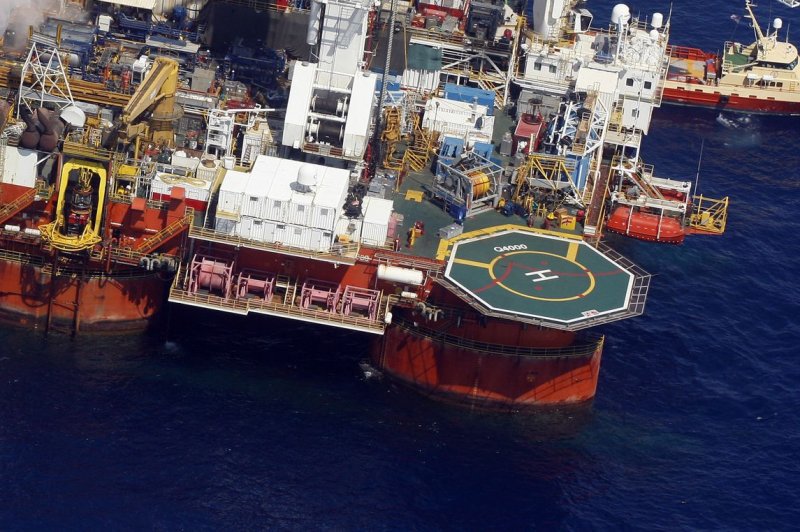Though only accounting for about 20 percent of total U.S. oil production, the Gulf of Mexico may be more stable than shale, a rig analyst said. File photo by A.J. Sisco/UPI |
License Photo
July 13 (UPI) -- The slow, but steady, gain in oil production expected from the U.S. waters of the Gulf of Mexico shows the region is more stable than shale, a rig analyst said.
The bulk of total U.S. oil production comes from inland shale basins. Total U.S. output is expected to reach 9.9 million barrels per day next year, the highest level ever if forecasts are accurate. The U.S. Energy Information Administration estimates about 20 percent of total U.S. oil production comes from the Gulf of Mexico.
Oilfield service company Baker Hughes reported 21 rigs in the Gulf of Mexico for the week ending July 7, unchanged from the previous week and up 16 percent from the same week in 2016. Energy price agency S&P Global Platts offered a more fluid picture for the week, but added the region as a whole was stable.
"Offshore Gulf of Mexico is exponentially more stable than shale," Trevor Crone, a drilling rig analyst for Platts, told UPI.
EIA reported total 2017 production from the Gulf of Mexico should be about 6 percent higher than last year. Production from the deep U.S. waters should reach 1.9 million barrels per day next year, an 11 percent gain from what's expected this year.
Eight new fields in the U.S. waters of the Gulf of Mexico started producing oil last year. EIA reported that expansions to existing fields this year, and new production slated for next year, are contributors to the expected growth in offshore production.
A March report from analytical group Wood Mackenzie found the cost to break even on oil and gas projects in deep waters, the U.S. Gulf of Mexico in particular, has dropped from around $70 per barrel to below $50 per barrel in some cases. Since 2014, Wood Mackenzie estimates the average cost to develop deep water projects has dropped more than 20 percent.
Crone said offshore production is slow to develop because of the planning and capital expense involved and there are larger volumes to sustain over a time horizon of years.
"In contrast, if commodity pricing moves into favorable territory for the shale guys they can respond in a matter of weeks," he said.
The EIA added that, because of the time it takes to get offshore operations up and running, the Gulf of Mexico is less vulnerable to large swings in oil prices.















